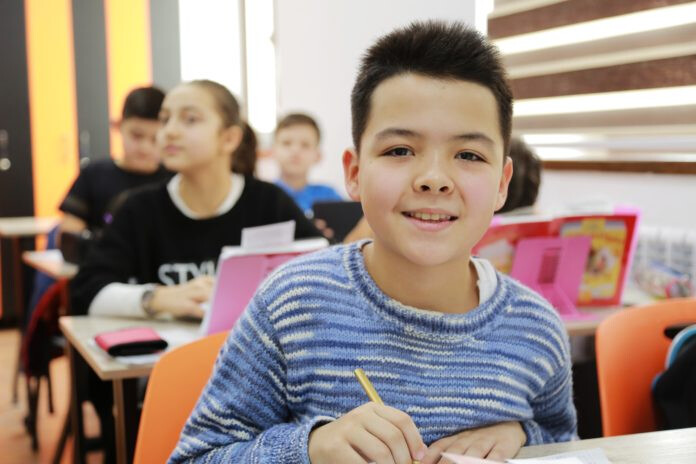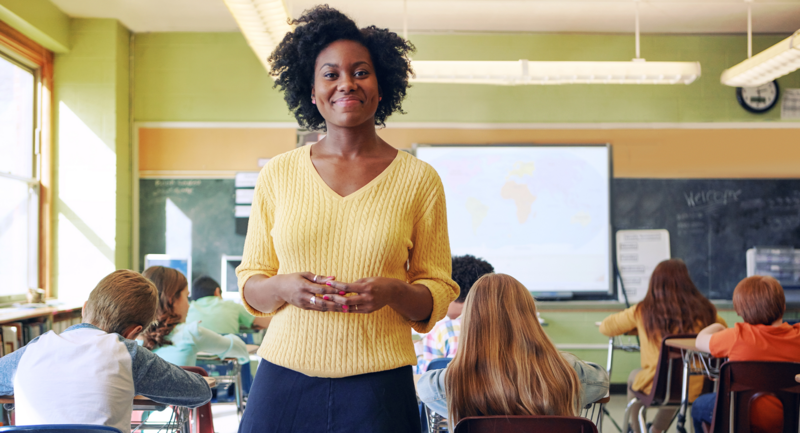By Didier Jourdan, Nicola Gray, Sean Slade & Michael Marmot
As the Director General of WHO indicated on March 12, the management of the Covid-19 pandemic is a question of “finding a delicate balance between health protection, the prevention of economic and social risks and respect for human rights.” As such, the reopening of schools can be seen both as a symbolic and practical herald of recovery. There are, however, obvious health risks, and these important decisions must be based on robust evidence.
The impact of school closures on students
School closures have an impact on all students and play an unfortunate role in amplifying inequity and inequalities. The school is both a living environment for students and staff and an education setting. In addition to the impact on learning and the consequences for the mental health of students, closure deprives the most vulnerable students of school meals and support from staff, while confinement aggravates economic problems of families which can lead to increases in episodes of domestic violence, child abuse and neglect. In addition, cutting-edge neuroscience research shows that the brains of young people need to be wired for social connection during adolescence in order to maintain health and well-being and the deprivation of social stimuli during this critical period of development can have long-term consequences.
The impact of school closures on the epidemic
Transmission in schools during previous epidemics was very low or absentvi, and it appears that re-opening schools closed due to Covid-19 may be implementable if combined with a series of necessary actions, including barrier use, social distancing measures and a robust program of testing, contract tracing and isolation. But such scientific knowledge alone is not sufficient to guide policies and practices; it is necessary to link this information with other sources of knowledge, particularly from the experience of other countries and the knowledge of professionals in the field.
Feedback from countries whose schools are not closed
Consider Taiwan, a country widely recognized for its successful management of the crisis. This successful management is largely due to the preparation of institutions, extensive intersectoral work at all levels, and an early and comprehensive reaction.
Taiwan’s strategy for containment included implementing a system of testing of close contacts of those infected, and their subsequent 14-day home quarantine. Differentiated school closure rules were enacted at the national levelviii that involved:
- 14-day home quarantine if one teacher or student is affected;
- single school closure if two or more teachers/students have a confirmed infection;
- district/city school closure if one-third of their schools have to close. Social distancing measures and systematic temperature checks were, and are, being carried out and mask wearing is compulsory. Even if such comparisons are limited by differences in countries’ cultural and social contexts, experience of epidemic management or public familiarity with barrier and social distancing measures, learning from their success is still helpful.
Benchmarks for the reopening of schools
We need an education system that enables for both effective learning and the protection of student and staff health. Available data allow us to identify four benchmarks likely to guide both political decision-making and the action of parents, students and professionals.
- A differentiated and progressive system It is not possible to carry out the re-opening process in the same way everywhere. The mechanism of re-opening will need to be tailored to the local context, giving priority to primary school children. Stakeholders from education, public health, transport and government – with students and families – must work together and consult with others. They must design a strategy that takes into account their experience and their own concernsix. They must receive intersectoral support and high-quality resources to enable them to do this.
- An organization to protect students and staff Hygiene measures and circulation control are central to safe re-opening. Hygiene plans must include social distancing, barrier measures, and attention to hygiene strategies such as handwashing and hand sanitizer. While mask use remains a controversial issue, it is a very visual reminder of the dangers of the virus and could act as a “behavioral boost” to support people’s commitment. Reducing the density of people in spaces can be achieved by reviewing circulation patterns, moving teachers between classrooms rather than students, staggering break times and shortening the school week. Staggering or adjusting start and finish times for specific schools is also an option though this would require extensive adjustment to many district’s transportation systems.
- A hybrid pedagogical approachCovid-19 has also created seismic changes in the way teachers have been forced to change their teaching methods and the ways in which students have been required to learn. This period has led to the exploration of new pedagogical modalities, and required new processes and new activities. Specific arrangements will be needed to ensure that all students have the access, opportunities, and means to learnx. There is already a need to prepare for hybrid teaching methods and arrangements. This will additionally require greater personalization, student agency and in increasing student pathways in order to increase growth and help reduce inequalities.
- Renewing our vision of the epidemic It is necessary to empower everyone to understand why schools are being closed or re-opened when the ‘war’ against the virus has not yet been won. Other epidemics were controlled mainly by screening and population-based approaches to protection. This calls for the development of citizen skills and personal responsibility. It will be essential for students to have a more ecological vision of the relationship between microbes and everyday health, to work on media literacy and critical thinking, and to see their well-being taken into account.
Conclusion
Drawing on all available research and experiential global evidence can not only help to implement the solutions best suited to our context but can also empower the entire population to understand and act effectively within the confines of the present situation. It will be necessary to review ways of working, strengthen intersectorality, consolidate knowledge from various sources, and develop decision-making and action capacities at the regional and local level. Systematic monitoring and dedicated research are needed to underpin future responses that limit education disruption and promote health for all.
A longer version of these reflections can be found in The Conversation.
Thanks to Min Chien Tsai from Fu jen University, Taipei and Valérie Ivassenko from the UNESCO Chair and WHO Collaborating Centre in Global Health & Education, Clermont Auvergne, France.
Additional Resources
Sean Slade is an education leader, speaker, and author, with nearly three decades of experience in education in the U.S. and globally. He serves as Head of BTS Spark, North America, the social impact arm of BTS focusing on educational leadership development. Prior to BTS Spark, Sean was senior director of global outreach at ASCD, where he launched and grew the ASCD Whole Child Network across 56 countries and led the development of the Whole School, Whole Community, Whole Child Model (WSCC) with the CDC. His latest book is The Power of the Whole: What is Lost by Focusing on Individual Things.








